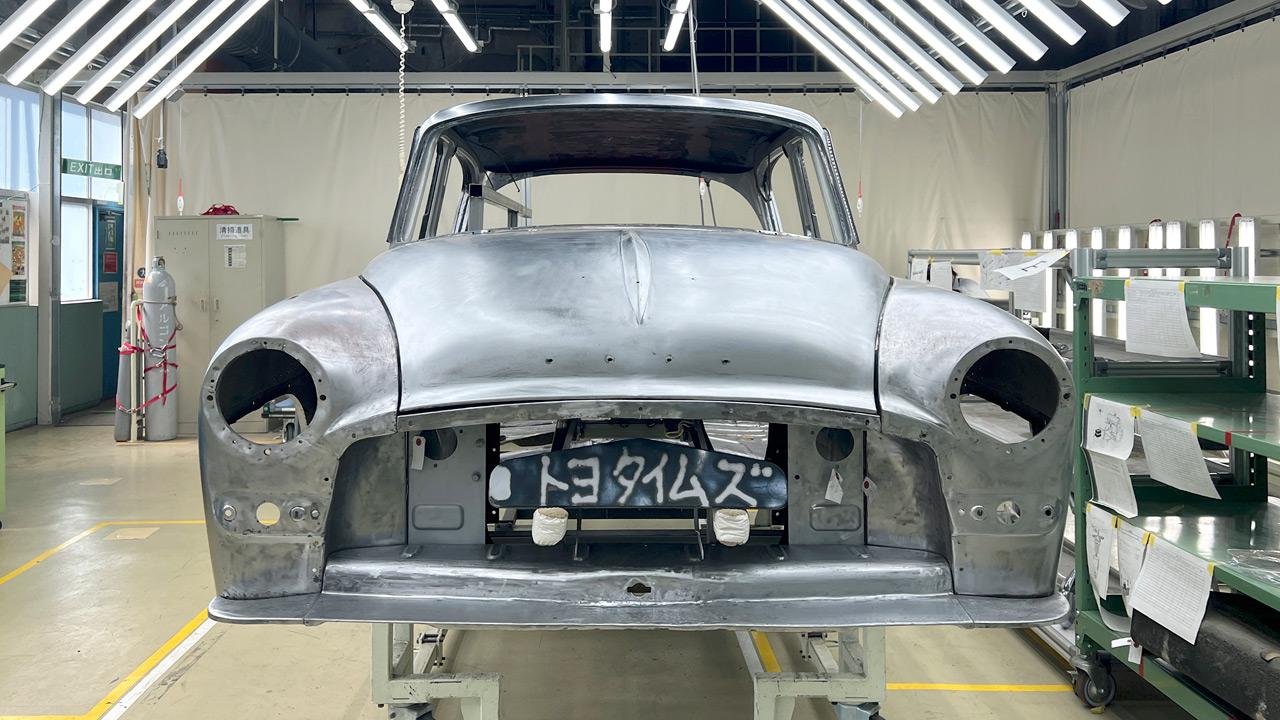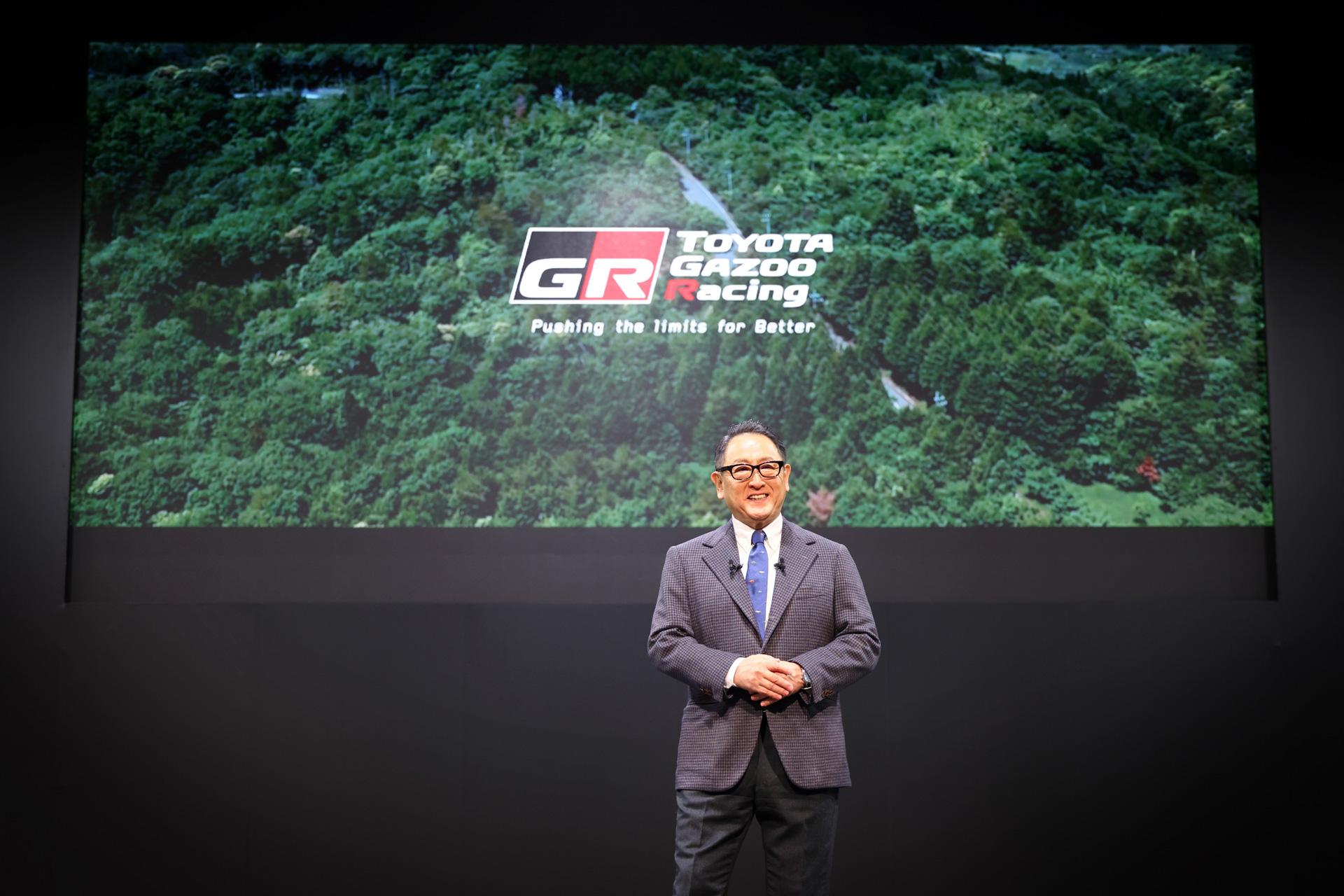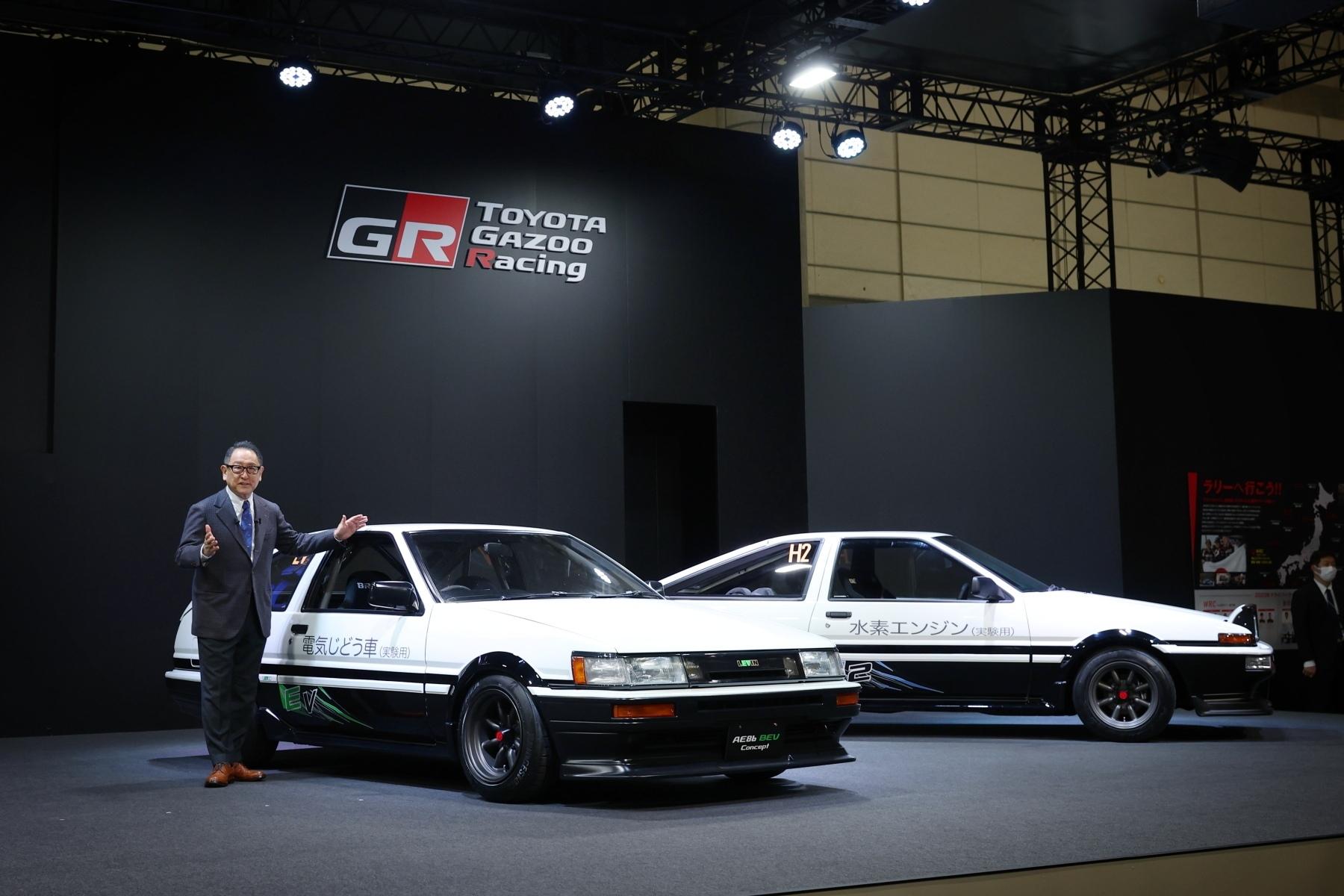
This series explores the project to restore a first-generation Crown, a car that embodies Toyota's origins. Part 4 covers the body restoration and special coating process designed to keep this cherished car on the road for decades to come.

A project to restore the first-generation Crown started in the spring of 2022 at the Motomachi Plant, bringing together a diverse group of skilled members. This series closes in on the restoration efforts, and in this article, the restoration work finally gets into full swing. In particular, we highlight the body panel work and special coating process, which drew on technology and expertise within Toyota and partner companies to ensure that the restored Crown can remain on the road for decades to come.
Pursuing carbon neutrality in your favorite car
Before showcasing the efforts of the Crown restoration team, let’s turn to the message that President Akio Toyoda delivered to fellow car lovers at Tokyo Auto Salon 2023 on January 13.
Taking the stage, Akio assured the crowd that “there is a carbon-neutral path for us as car lovers!” and “we don’t want to leave any car lovers behind!”

He then unveiled two concept cars based on the fifth-generation Levin and Trueno, commonly known as the AE86, which remain hugely popular among sports car and motorsport fans. Staying as true as possible to the cars’ original condition, the AE86 H2 Concept and AE86 BEV Concept had been converted into, respectively, a hydrogen-powered car and a battery electric vehicle (BEV).
Why did Toyota exhibit these two vehicles? To underscore the idea that simply producing all new cars as BEVs would not achieve carbon neutrality by 2050—cars already on the road would also need to be made carbon-neutral.
The conversions unveiled at the event offer one option. As Akio’s message described, they also symbolize a commitment to ensuring that people who wish to continue driving their beloved cars are not left behind on the road to carbon neutrality; Toyota will do everything possible to develop new options and create a carbon-neutral path for car lovers.

Car lovers uneasy about shift to BEV-fixated future
In Europe and other parts of the world, many believe that shifting all new vehicles to BEVs is the only way to make cars carbon-neutral.
Unfortunately, taking this approach alone will make it a struggle to reach the world's target of making cars carbon-neutral by 2050.
Currently, some 80 million new cars are sold globally every year. Meanwhile, more than 1.5 billion cars are already on the road worldwide, meaning that new car sales account for no more than 1/20th of owned vehicles.
Two effective ways of decarbonizing these vehicles are to modify their engines to run on hydrogen fuel, or to convert them into EVs by electrifying the powertrain while retaining the original body and chassis. Both of these approaches would reduce the CO2 emitted by vehicles already on the road.
To continue driving these owned vehicles after conversion, the body and chassis need to have long lifespans. CO2 is emitted not only when making and running a car, but also in the process of scrapping or recycling. If restoration increases a vehicle’s longevity, it can also reduce the CO2 emitted when scrapping and recycling.
As such, the type of high-quality restoration that only automotive manufacturers can offer is set to play an important role in extending the lifespan of owned vehicles.
In that sense, like the two AE86 concept cars, the first-generation Crown restoration project can be seen as an ambitious undertaking that will help to make existing vehicles carbon-neutral. For this reason, the body restoration featured here included a special trial in the painting process, aimed at giving cherished cars many more decades on the road.
With that, let’s return to the workshop floor where the Crown’s curvy body was being restored. As a sign of the project team’s hospitality, the car greeted our reporters sporting “Toyota Times” plates.

